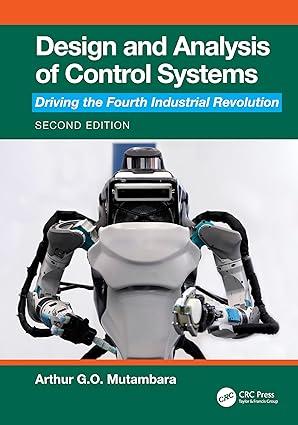The equations describing the motion of an Earth satellite in the orbit plane are [ begin{aligned} &
Question:
The equations describing the motion of an Earth satellite in the orbit plane are
\[
\begin{aligned}
& r \frac{d^{2} \theta}{d t^{2}}+2 \frac{d r}{d t} \frac{d \theta}{d t}=0 \\
& \frac{d^{2} r}{d t^{2}}-r\left(\frac{d \theta}{d t}ight)^{2}=-\frac{k^{2}}{p r^{2}}
\end{aligned}
\]
A satellite is nearly in a circular orbit determined by \(r\) and \(\frac{d \theta}{d t} \equiv \omega\). An exactly circular orbit is defined by \[
r=r_{o}=\text { constant }, \quad \omega=\omega_{o}=\text { constant } .
\]
Since \(\frac{d r_{o}}{d t}=0\) and \(\frac{d \omega_{o}}{d t}=0\), the first differential equation is eliminated for a circular orbit. The second equation reduces to \(r_{o}^{2} \omega_{o}^{2}=\frac{k^{2}}{p r_{o}^{2}}\). Find a set of linear equations that approximately describe the differences.
Step by Step Answer:

Design And Analysis Of Control Systems Driving The Fourth Industrial Revolution
ISBN: 9781032718804
2nd Edition
Authors: Arthur G O Mutambara





